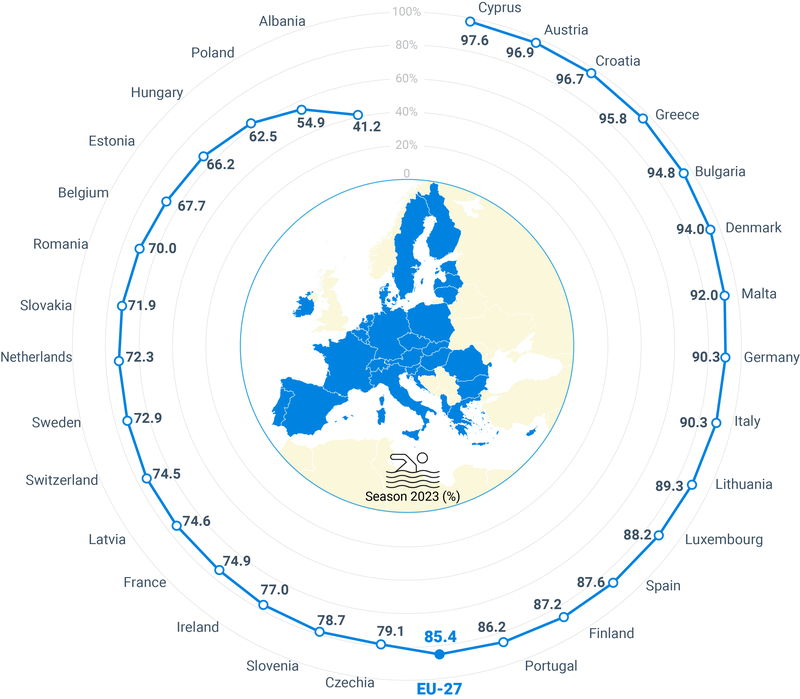All official European Union website addresses are in the europa.eu domain.
See all EU institutions and bodiesEurope has a great diversity of beautiful beaches and bathing areas, and each year millions of Europeans spend their weekends at their local beach or their holidays cooling down by the water. Bathing water quality at beaches across Europe improved significantly over the past few decades, and is now consistently good, thanks to EU policies and actions by Member States.
Be it a lake in Finland, an Aegean island or the Copenhagen harbour, every year millions of Europeans are enjoying a dip in the water, with the knowledge that the water is safe for bathers across Europe.
Thanks to EU legislation and effective implementation by Members States, the bathing water quality improved significantly over the last four decades. Today 96% of EU bathing sites meet the minimum standards set by EU legislation.
The water we swim in can be polluted by bacteria Escherichia coli – or E. coli – and intestinal enterococci that may cause illness. Usually, these bacteria stem from untreated waste water or manure that end up in bathing waters e.g. following heavy rain. Improvement to bathing water quality is largely due to improved wastewater treatment.
Although most of Europe’s bathing waters are in excellent condition, pollution of surface and groundwater remains significant and may be exacerbated by the changing climate. Improving water resilience for people and for the environment in coming years will be key.
Member States monitor the quality of bathing water during the bathing season. This data is then reported, analysed and communicated in order to assess the overall water quality for a given bathing season. This assessment is a good indication of the bathing water quality for the coming season.
The assessment for the 2023 bathing season, including country fact sheets can be read here. For previous bathing seasons, you can find our assessments here.
Summer 2023
21,700+
bathing waters
assessed across European Union
85%
of bathing waters
had excellent quality
1.5%
of bathing waters
had poor quality

Up for a swim: which EU country has the best water quality?
Details on all Member States' bathing waters for the 2023 season can be found in the national bathing water fact sheets.
Each report contains details on monitoring bathing water quality in the specific country and an assessment of the 2023 results and the trends in bathing water quality.
Proportion of bathing waters with excellent quality in European countries in 2023

Notes: The assessment covers 22,081 bathing waters in Europe that were reported to the EEA for the 2023 season. In the EU, there were a total of 21,766 bathing waters. Only 77% of bathing waters in Poland were assessed for quality. A significant share of these waters were newly identified and complete sets of samples, which would allow an assessment compliant with BWD requirements, were not available for classification.
Source: WISE bathing water quality database (data from 2023 annual reports by EU-27 Member States, Albania and Switzerland).
Check the quality of the bathing water near you.
Marine litter: Where does it come from?
There are no surprises: land-based sources account for a massive 80% of marine litter in Europe, and approximately 85% of it is plastic, according to the EEA web report 'From source to sea — The untold story of marine litter.' Packaging and small plastic items make up nearly 80% of this plastic waste.
The new EEA report is the first Europe-wide study of its kind taking a holistic look at how this litter is created and ends up in our European seas via our rivers.

